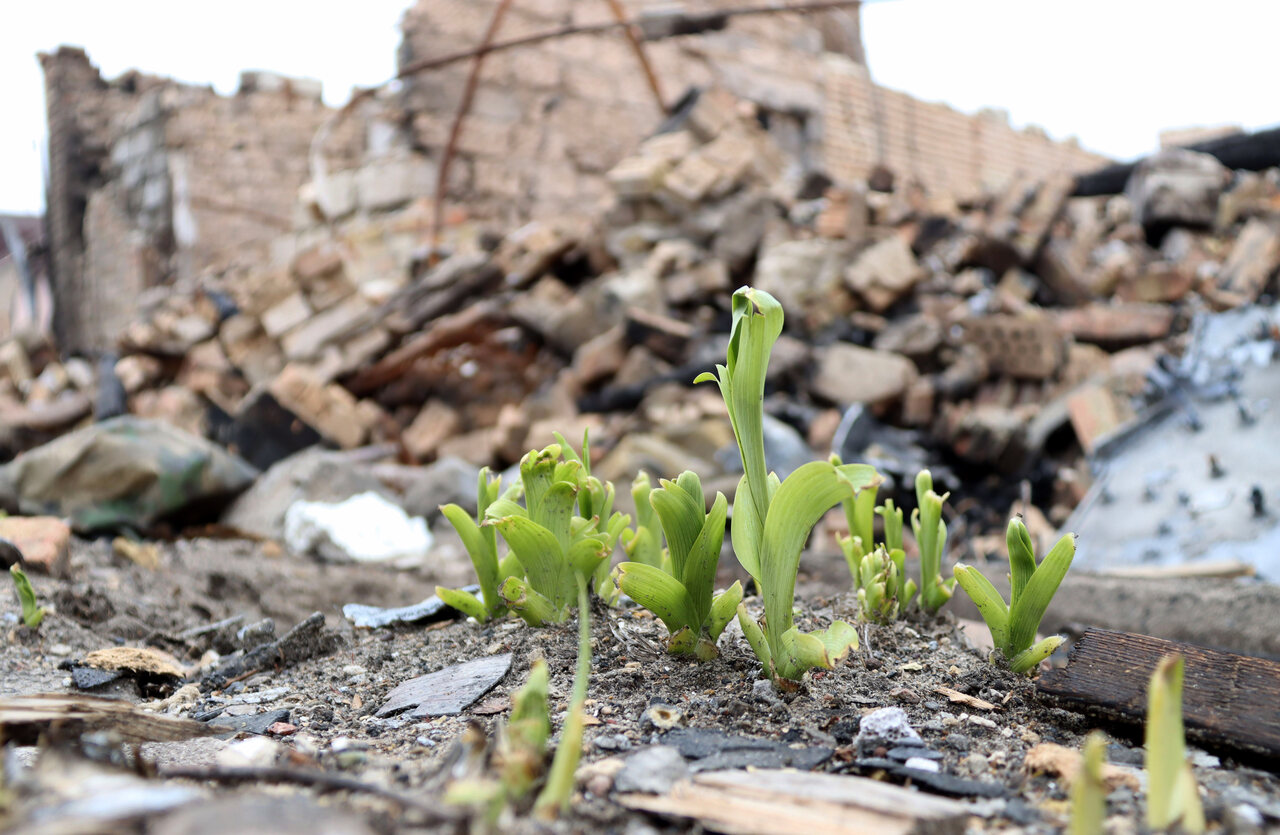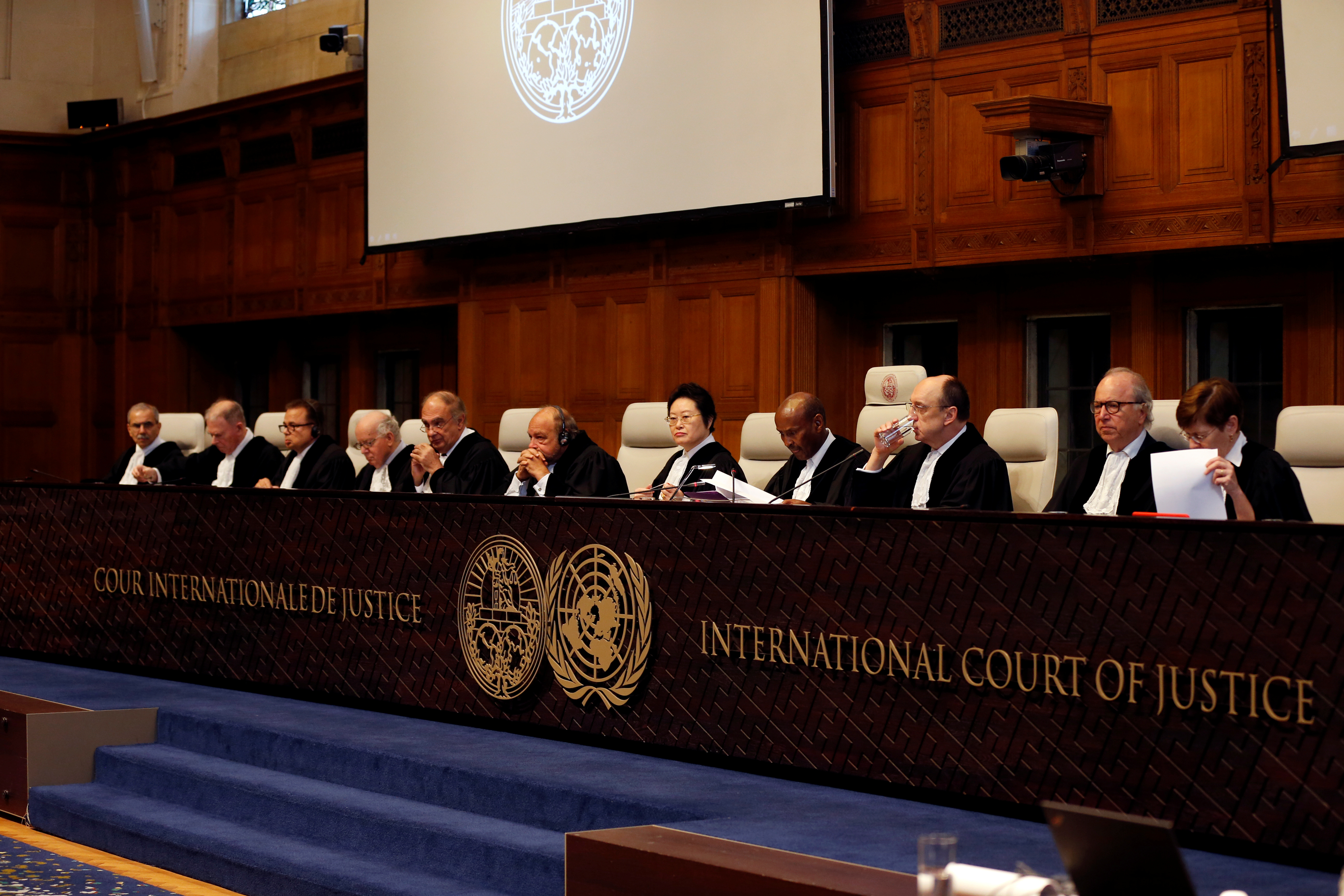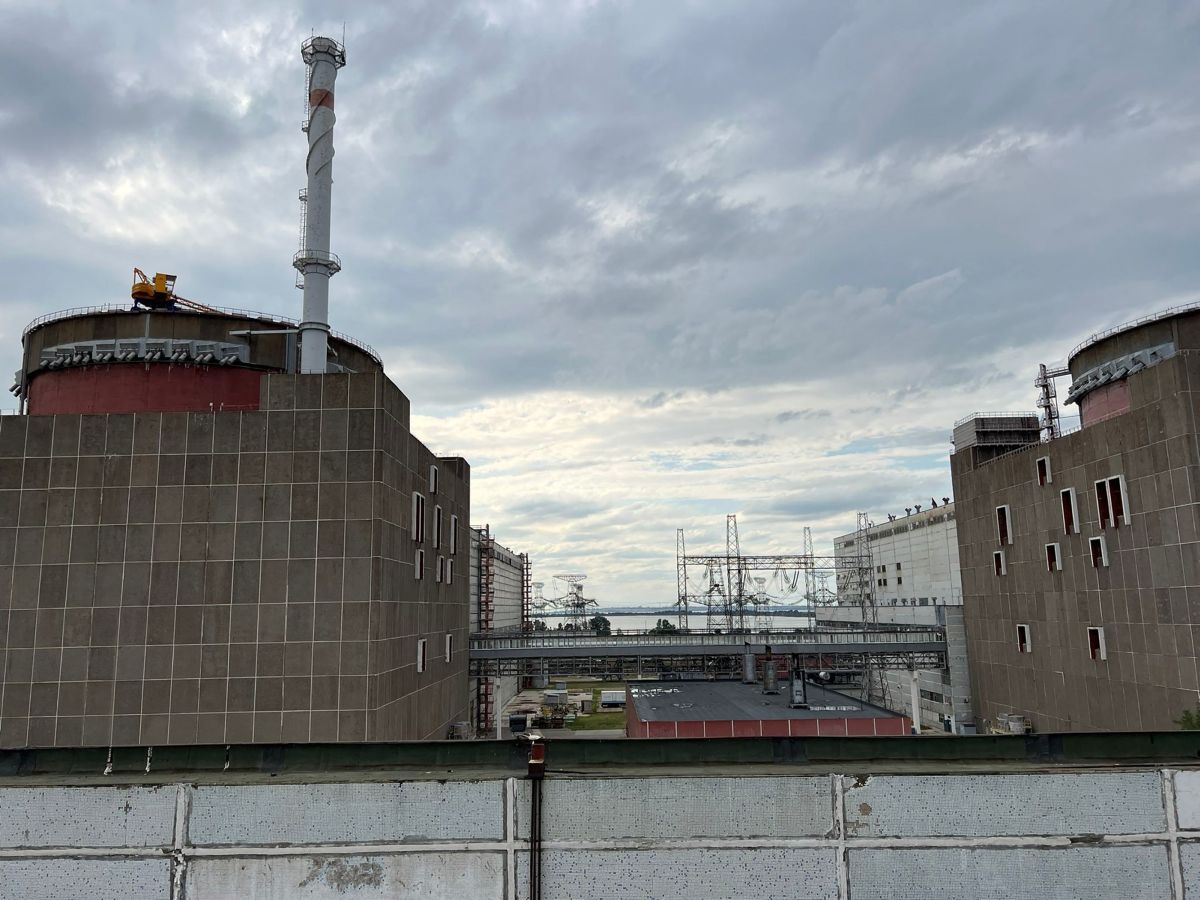Ukraine Faces Long-Term Environmental Consequences of Russian Aggression
As a result of the war caused by Russian aggression, environmental degradation is occurring and the ecological threat in Ukraine is increasing. It will have a significant impact on the pace and success of the country’s reconstruction. The revitalisation and repair of the environmental damage caused by the war will be a process spread over decades, but some work—demining and the elimination of chemical and biological hazards—has already begun.
 Anatolii Siryk / Zuma Press / Forum
Anatolii Siryk / Zuma Press / Forum
Damage and Threats to Date
Military operations on the territory of Ukraine have led to widespread environmental degradation that includes the devastation of ecosystems and natural resources and direct threats to humans and animals. There is air pollution and contamination of water and soil with heavy metals and toxic substances. Threats are posed both by landmines, the use of military equipment in sensitive areas, and damage to infrastructure. In addition, danger arises from the destruction of industrial facilities, including power stations, oil storage facilities, refineries, and large plants (Azot in Severodonetsk, Azovstal in Mariupol), which have been largely destroyed by Russia. The aggressor has also engaged in military action around nuclear power plants, creating a threat to nuclear biosecurity.
The State environmental inspectorate of Ukraine estimates the damage to nature at the equivalent of about $61.7 billion (data as of October this year). Most of the destruction is located in eastern and southeastern Ukraine, where the heaviest fighting has taken place and is still taking place. However, environmental hazards are not limited to this area, as attacks on cities and critical infrastructure is affecting the entire country. As far as possible, the Ukrainian authorities have already started to partially restore ecosystems, including tree planting in burnt forests.
The destruction of the Kakhovka Dam on 6 June this year is having an unprecedented impact on the environment and the Ukrainian economy. The immediate result was the draining of the Kakhovka Reservoir, where the Dnieper is now recreating its riverbed, and the flooding that passed downstream, inundating some 600 square kilometres, including parts of cities such as Kherson, Oleshki, and Nova Kakhovka. The flood was a threat not only to tens of thousands of people living in the river valley but also to the entire river ecosystem, including the UNESCO Black Sea Biosphere Reserve, which is located at the mouth of the Dnieper. At least 700,000 people in southern Ukraine were left without water, and agriculture, which is largely dependent on artificial irrigation using canals coming out of the Kakhovka Reservoir, was also affected. In addition, the flood wave carried mines and unexploded ordnance into the Black Sea, with the result that the coastlines of neighbouring countries Romania and Bulgaria are at risk. Ukraine will have to decide in the future whether to rebuild or abandon the dam, but efforts are already underway to secure the dried-up reservoir—it has been sown with annual plants to prevent sandstorms and the spread of invasive plants.
Long-Term Effects
As a result of the war, Ukraine has become the most mined country in the world. Today, it is estimated that up to 28% of its territory, or about 174,000-250,000 km2, requires demining—equivalent to the area of the UK at 244,000 km2, or a large part of Poland (312,000 km2)—including almost 2,000 km2 of nature reserves. The priority for checking for mines and other explosives is residential areas and their surroundings, followed by cultivated fields, only then will it be possible to focus on such areas as nature reserves. The Ukrainian government plans to check 80% of the affected area within 10 years, but for this to happen there must be a significant increase in sapper capacity, both trained personnel and the appropriate machinery.
The total cost of demining Ukraine could be as high as $50 billion. The main challenge is the global lack of adequately trained personnel and equipment, including mine-clearing vehicles (mineploughs). Although there are already a number of programmes in place to support mine clearance, and international partners have pledged around $500 million for this purpose, Ukraine will need further assistance from the international community. Poland can help Ukraine by sending additional missions (e.g., Humanitarian Police Contingent) to demine found charges.
Environmental degradation can lead to problems among the population in the area, including health problems, which in turn can cause social unrest or migration. As a consequence of the drying up of the Kakhovka Reservoir, the hydrological situation in the southern regions of Ukraine has changed. The lack of drinking water and irrigation for crops will lead to a lack of work and the possibility that refugees will turn to southeastern Ukraine. A special case is the Donbas, occupied since 2014, which is already teetering on the brink of ecological disaster. The negligence and deliberate actions of the region’s illegal authorities have led to environmental contamination, including the flooding of coal mines.
Tackling the Effects of the Environmental Threats
The first step to effectively counter the negative environmental effects of the war is to collect information on specific events. A website, EcoZagroza, run by the Ministry of the Environment and Natural Resources with financial and other support from the EU and the U.S., allows users to post detailed information. Assessing the environmental consequences of the war is part of President Volodymyr Zelensky’s peace formula. The plan also envisages holding Russia accountable for this destruction and ensuring that the environment is rehabilitated. The International Working Group on the Environmental Consequences of War, led by the head of the Office of the President of Ukraine Andriy Yermak and former Deputy Prime Minister of Sweden Margot Wallström was set up to implement this point of the peace plan. The United Nations Environment Programme (UNEP) also supports monitoring the environmental impacts of the war. Such activities are important because they not only allow for a factual assessment of the damage but also will translate into concrete rehabilitation plans.
The effective protection of the environment in Ukraine and the levelling of the effects of the current military activities on its territory are largely dependent on the reconstruction plans. Both Ukrainian concepts of post-war reconstruction and the guidelines of the partners supporting reconstruction assume linking it to sustainable development and care for the environment. This approach is enshrined in, among others, the Donor Coordination Platform for Ukraine, which brings together representatives of Ukraine, the EU, and G7 countries, as well as partners from international financial institutions. It is also a priority of EU programmes, such as the Neighbourhood, International and Development Cooperation Instrument, from which the assistance to Ukraine is drawn, that at least 30% of the funds be allocated to climate objectives. Ukraine was also the first non-EU country to join the EU's LIFE programme, which can be used for environmental restoration.
Perspectives
The environmental effects of the war are primarily of long-term significance. They affect not only the state of ecosystems or the economy but also into the quality of life of people in the devastated areas. Ukraine will be confronted with the environmental consequences of the war for decades after the end of the war and will constantly need the support of foreign partners, primarily in technological and financial terms. While the reconstruction plans to date include environmental issues, it is funding that may be the challenge. It is important that these issues are treated as equally important as other activities, and that potential funding cuts do not come at the expense of environmental elements.
Although infrastructure is now being rebuilt on an ongoing basis, only systematic reconstruction based on sustainable and ecological restoration has the potential to counter the environmental threats, both those existing and others in the future. While repairing damaged infrastructure will be a challenge due to its scale, at the same time it is an opportunity to implement new environmentally friendly technologies, and post-war reconstruction can accelerate the energy transition.
Ukraine has a number of cases pending before international tribunals for Russian war crimes, but holding perpetrators accountable for actions against the environment will remain a particular challenge. The Statute of the International Criminal Court (ICC) does not define the separate crime of so-called ecocide. The international community, including Poland, splay an important role here by supporting Ukrainian efforts to introduce a definition of such a crime into international law.





